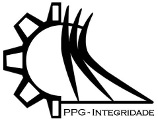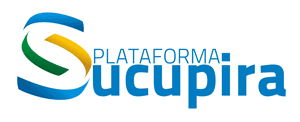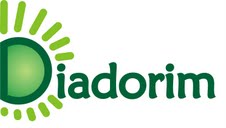A FOSM-BASED RELIABILITY ASSESSMENT OF STEAM GENERATOR TUBES UNDER CRACKING DEGRADATION
DOI:
https://doi.org/10.26512/ripe.v2i15.21383Palavras-chave:
Fracture mechanics. Structural reliability. FOSM method.Resumo
Steam generator tubes are critical parts in the safety and operability of nuclear power plants. Thus, the degradation in steam generator tubes must be prevented. These tubes are subjected to the degradation mechanism of stress corrosion cracking, which is characterized by several uncertainties. The assessment of structural reliability of the steam generator tubes is essential for preventing the occurrence of failure events. In the present work, a study is carried out for assessing the structural reliability of the steam generator tubes containing cracks, by using first order second-moment (FOSM) concepts. The limit state function is based on a limit load model provided by Eletric Power Research Institute (2001), which describes the failure criterion. The applicability of the FOSM method as a methodology for predicting the reliability of steam generator tubes is checked by comparing results of calculated failure probability with ones obtained from Monte Carlo simulation. The FOSM method has provided a non-conservative reliability assessment for the steam generator tubes containing cracks, and are eligible for estimating the failure probability of this safety-critical structure.
Referências
Bergant, M. A., Yawny, A. A., & Perez Ipina, J. E., 2015. Failure assessment diagram in structural integrity analysis of steam generator tubes. Procedia Materials Science, vol. 8, pp. 128-138.
Cizelj, L., Mavko, B., & Hiesch-Opperman, H., 1994. Application of first and second order reliability methods in the safety assessment of cracked steam generator tubing. Nuclear Engineering and Design, vol. 147, pp. 1-10.
Det Norske Veritas, 1992. Structural Reliability Analysis of Marine Structures. Det Norske Veritas, DNV Classification Notes no. 30.6.
Eletric Power Research Institute, 2001. Steam Generator Degradation Specific Management Flaw Handbook. Eletric Power Research Institute, Report 1001191.
Eletric Power Research Institute, 2006. Steam Generator Integrity Assessment Guidelines, Revision 2. Eletric Power Research Institute, Report 1012987.
Erdogan, F., 1976. Ductil fracture theories of pressurized pipes and containers. International Journal of Pressure Vessels & Piping, vol. 4, pp. 253-283.
Guoshoa, C., & Shuho, D., 1996. Study on the reliability assessment methodology for pressure vessels containing defects. International Journal of Pressure Vessels & Piping, vol. 69, pp. 273-277.
Hasofer, A. M., & Lind, N. C., 1974. An exact and invariant first order reliability format. Proc. ASCE, J. Eng. Mech. Div., pp. 111-121.
Huh, N., Kim, J., Chang, Y., Kim, Y., Hwang, S., & Kim, J., 2006. Elastic-plastic fracture mechanics assessment for steam generator tubes with through-wall cracks. Fatigue & Fracture of Engineering Materials & Structures, vol. 30, pp. 131-142.
Maneschi, J. E., & Miranda, C. A. J., 2014.Mecanica da Fratura na Industria Nuclear. Rio de Janeiro: Lithos Edicao de Arte.
Melchers, R. E., 1987. Structural Reliability: Analysis and Prediction. Ellis Horwood Limited, 1st edition.
Nuclear Energy Institute, 2005. Steam Generator Program Guidelines, Revision 2. Nuclear Energy Institute, NEI 97-06.
Wang, X., & Reinhardt, W., 2003. On the assessment of through-wall circumferential cracks in steam generator tubes with tube supports. Journal of Pressure Vessel Technology, vol. 125, pp. 85-90.
Downloads
Publicado
Edição
Seção
Licença
Autores que publicam nesta revista concordam com os seguintes termos:
Autores mantém os direitos autorais e concedem à revista o direito de primeira publicação, sendo o trabalho simultaneamente licenciado sob a Creative Commons Attribution License o que permite o compartilhamento do trabalho com reconhecimento da autoria do trabalho e publicação inicial nesta revista.
Autores têm autorização para assumir contratos adicionais separadamente, para distribuição não-exclusiva da versão do trabalho publicada nesta revista (ex: publicar em repositório institucional ou como capítulo de livro), com reconhecimento de autoria e publicação inicial nesta revista.
Autores têm permissão e são estimulados a publicar e distribuir seu trabalho online (ex: em repositórios institucionais ou na sua página pessoal) a qualquer ponto antes ou durante o processo editorial, já que isso pode gerar alterações produtivas, bem como aumentar o impacto e a citação do trabalho publicado.









